
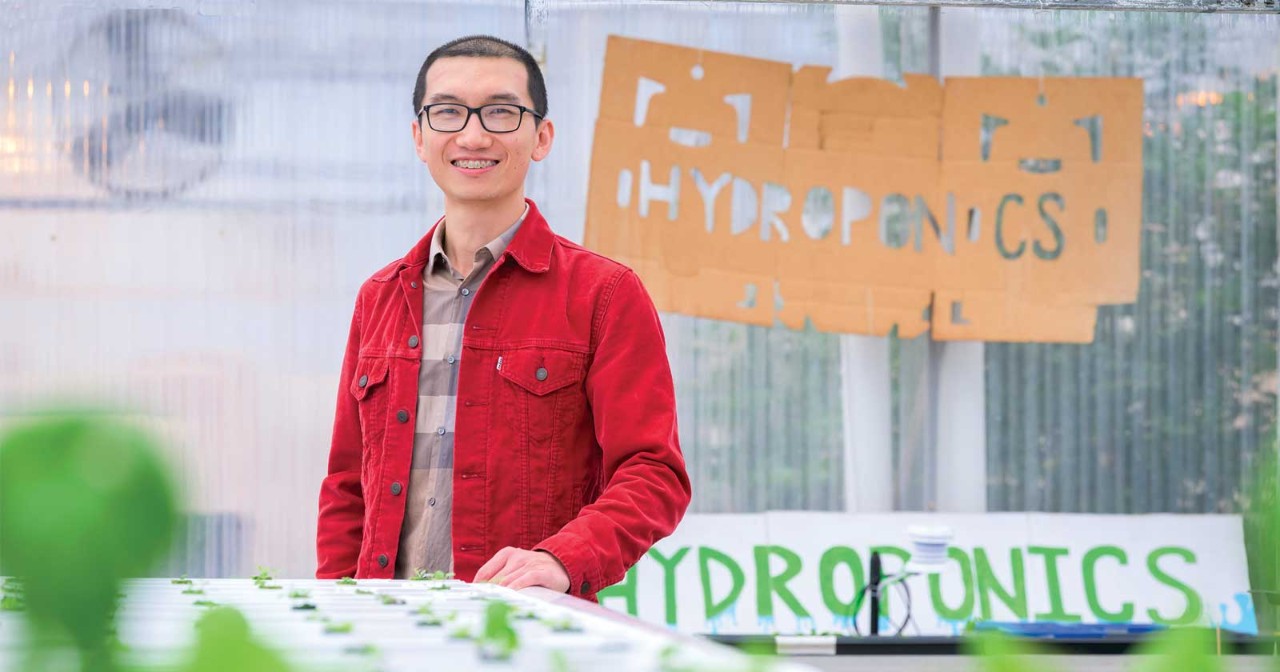

From cities to space
Hydroponic food production offers glimpse into the future of food
January 09, 2024
It’s a task as massive as it is urgent: feeding more than eight billion humans, including 330 million Americans.
The amount of planning, land and labor required is virtually impossible to comprehend, though the pandemic helped shine an alarming spotlight on strained food supply chains and empty grocery store shelves.
Here in Newark, UD faculty and students are tackling this global challenge by approaching key food system challenges with a critical and innovative lens. One key opportunity emerging in the College of Agriculture and Natural Resources is hydroponic food production, better known as the science of growing food without soil, with less water and with higher plant yields.
The practice can provide locally grown food year-round and bring healthy food to underserved communities. Imagine a city with no arable land for miles. Growers there don’t need to till soil; they can instead place hydroponic systems in underused buildings, rooftops and brownfields.
But how to create the next generation of hydroponic experts?
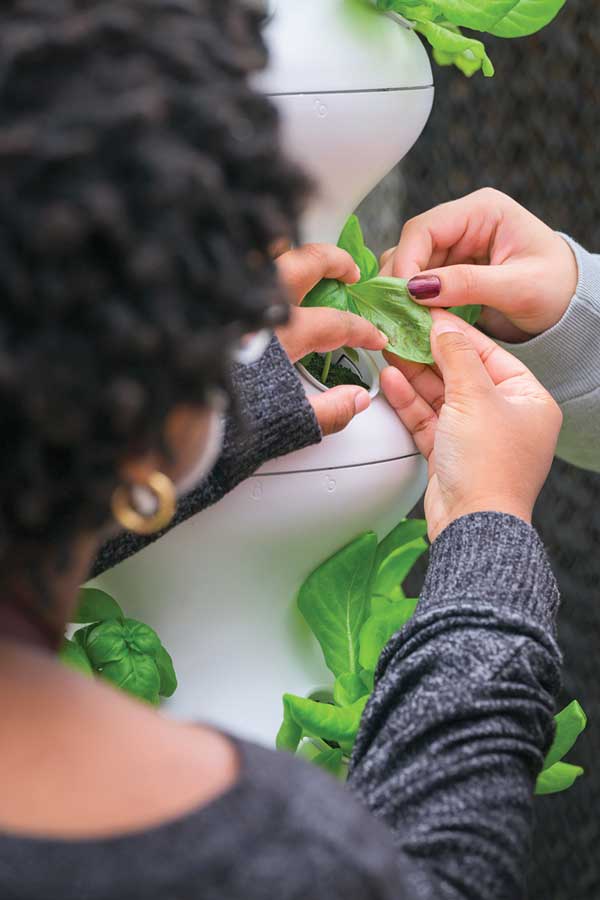
At UD, students turn to the tutelage of Qingwu (William) Meng, assistant professor of controlled-environment horticulture and instructor of the popular Hydroponic Food Production course (PLSC321).
In the hands-on class, students build hydroponic systems, grow (and harvest) crops, manage nutrients, analyze economic viability, collect data and examine societal benefits like urban food challenges.
“I think hydroponics is a big part of making our food systems more sustainable,” says Ian Kelly, ANR24, who took Meng’s introductory course. In addition to learning how to build a nutrient film technique system (in which students grow plants by maintaining a nutrient solution coating around the roots), Kelly also credited the class with reinforcing concepts in teamwork and problem solving.
It’s the kind of education that has students clamoring for more. In Spring 2024, Meng will launch a new advanced course for both undergraduate and graduate students: Environmental Control of Plant Growth and Advanced Hydroponics (PLSC467/667).
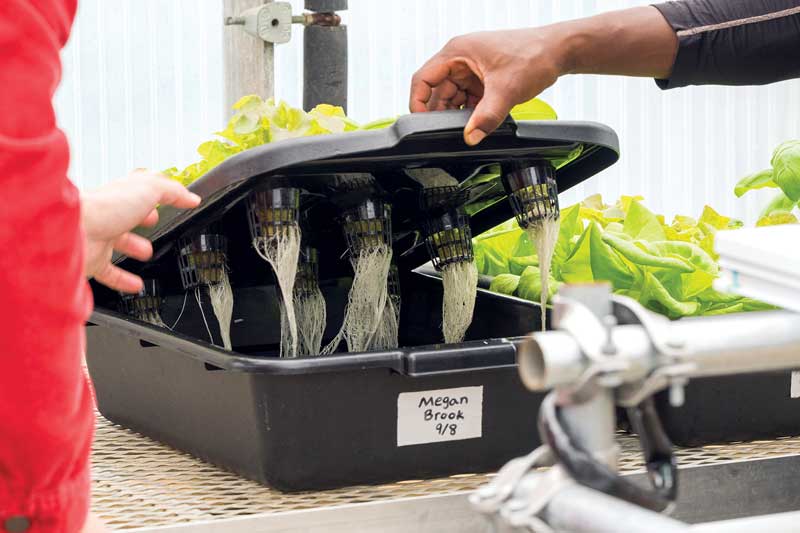
"We go deeper into what a professional hydroponic grower needs to know,” explains Meng. “Students use cutting-edge technologies—lighting, environmental sensors and control systems—to optimize greenhouse production and research, growth chamber plant research and indoor vertical farming. They’ll also learn how to apply this knowledge to future graduate research or professional careers.”
Outside of the classroom, Blue Hens have founded a new registered student organization, the Hydroponics Club, aimed at showing the UD community what’s possible in the world of hydroponics.
The club uses UD greenhouse space to grow leafy green plants and other delicious and nutritious crops.
But they aren’t satisfied staying indoors. The students built a partnership with UD Dining Services that includes aeroponic towers in UD dining halls for all to see and eat. As the students build up their production volume, the group continues the partnerships built by Meng with local restaurant Peach Blossom and on-campus legend Vita Nova.
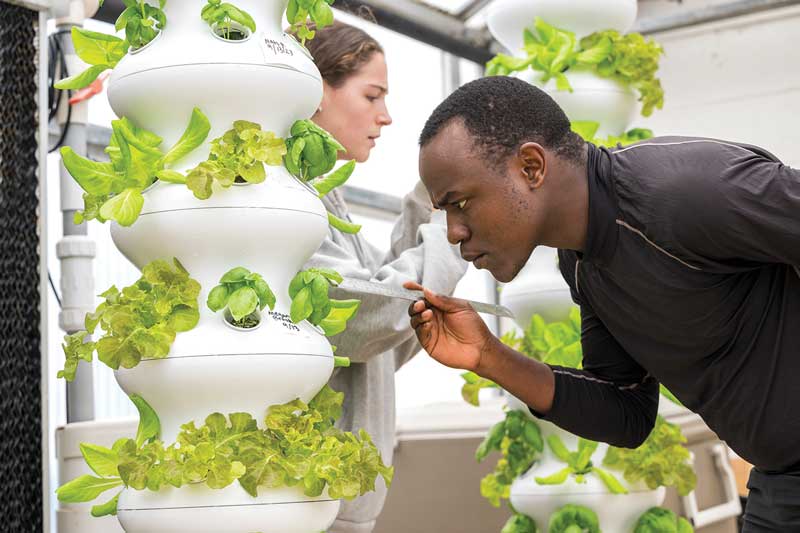
Advised by Meng, the club is led by students like Kelly, Evyn Appel, ANR25, and Shem Elias, ANR23M, and has attracted interest from across the University, including those majoring in environmental science, environmental engineering and public policy.
“As an organization, the Hydroponics Club provided a platform to talk about sustainable food production with an audience wider than I could have hoped,” says Appel, who plans to research policy issues around hunger and agricultural illiteracy. “We’ve just scratched the surface of its potential.”
Elias, meanwhile, came to UD by way of Tanzania through the Borel Global Fellowship, a scholarship
program that equips African citizens with research and higher education opportunities in the U.S.
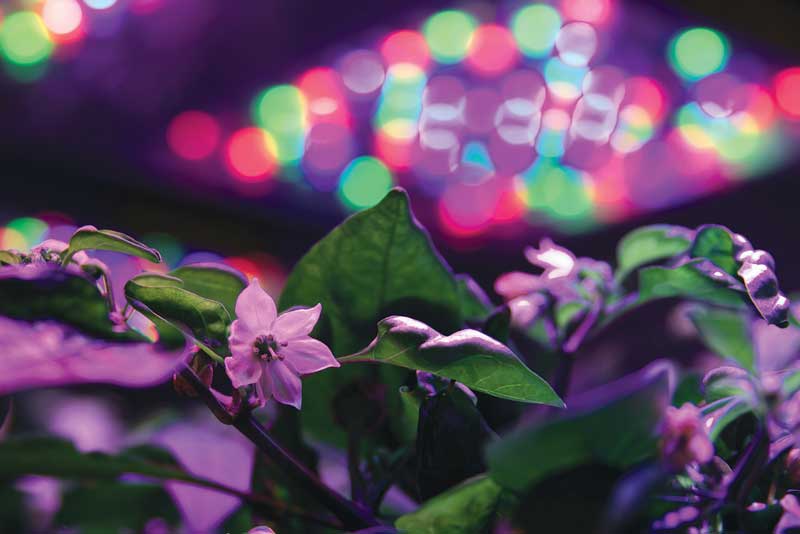
As a newly minted Ph.D. student working with Meng, Elias has explored ways to improve the yield of ginger in his homeland. There, the highly coveted medicinal and spice crop yields an average of 2.5 tons per acre, compared to the global average, which ranges from 10 to 30 tons in per-acre production.
“I anticipate perfecting my technical knowledge of controlled-environment horticulture and urban agriculture,” says Elias, whose work will focus on helping producers and growers cut down costs associated with hydroponic food production and enhance profitability.
Another Meng mentee is Tommy Kramer, ANR24, who conducts research in UD’s Indoor Ag Lab. He’s honing his hydroponic craft, learning to diagnose plants’ nutrient deficiencies, an interest that began by studying how to best grow strawberries under artificial light (LEDs).
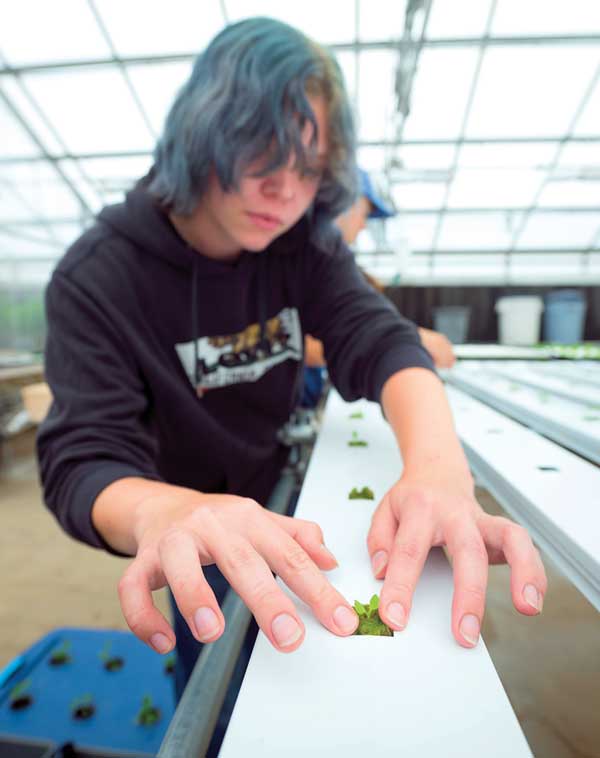
Beyond food is flora. Kramer and Meng recently collaborated on finding the optimal lighting strategies to achieve the most rapid and robust flowering of ornamentals like petunia, snapdragon and coreopsis plants.
“A lot of what we know how about growing food crops hydroponically is built upon decades of research on growing floriculture crops in greenhouses,” Meng explains.
The stakes are high. If researchers can crack this next-generation farming on Earth, it might help humans colonize in space, where soil isn't an option.
In the final frontier, hydroponically grown produce faces daunting challenges, including extreme environmental stressors like radiation and microgravity, and a lack of light (an essential component in turning a seed into a mature plant, as any viewer of Ms. Frizzle’s Magic School Bus will recall).
That’s where Meng and company will boldly go forth with novel research. As a recipient of NASA’s Early Career Investigation grant, the UD professor will investigate light optimization for growing food in space.
Specifically, he’ll examine how changing light conditions over time can optimize lettuce productivity and nutritional quality under superelevated carbon dioxide and low relative humidity.
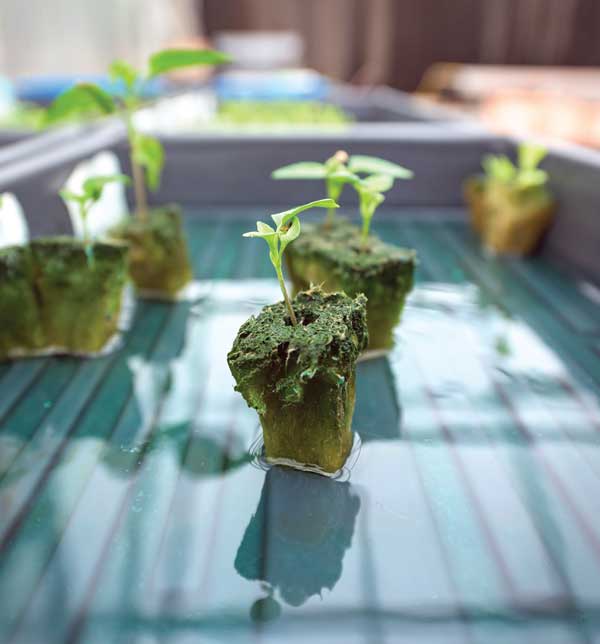
And more grants are on the way. Meng has earned a New Innovator in Food and Agriculture Research Award from the Foundation for Food and Agriculture Research and is working on an Urban, Indoor and Emerging Agriculture Program bestowed by the U.S. Department of Agriculture.
With increasing interest in growing food hydroponically on campus and across the country, UD is expanding its hydroponics capabilities. On top of the existing equipment in on-campus greenhouses, the ground floor of Townsend Hall now boasts lab space for hydroponics and controlled-environment crop production. Armed with an array of colorful and carefully selected LED lights, Meng’s team will find ways to reduce costs for indoor hydroponic growers.
As technology improves and knowledge evolves, expect to see sustainably minded Blue Hens across the hydroponic growing arena, conducting crucial research and leading private industry ventures.
Sounds like it’s time to get your fork ready.
Contact Us
Have a UDaily story idea?
Contact us at ocm@udel.edu
Members of the press
Contact us at mediarelations@udel.edu or visit the Media Relations website


